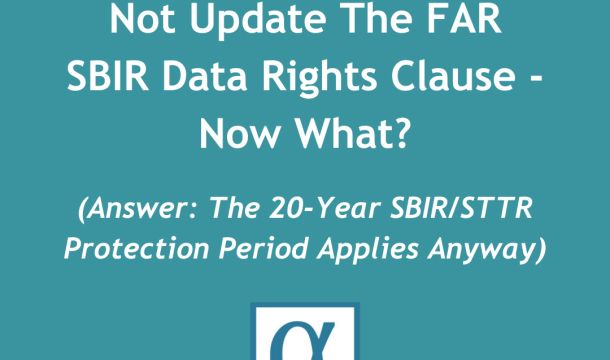The GovCon Bulletin™
Independent Contractor Regulation Update: DOL Withdraws Rule
As we discussed in our article last month (here), in February the U.S. Department of Labor (DOL) decided to delay until May 7 the implementation of its new independent contractor regulation, which was released in November 2020 under the prior administration. The new regulation adopts a five-factor “economic reality” test for making the determination of whether a worker should be classified as an employee or an independent contractor under the Fair Labor Standards Act (FLSA), and two of the factors are designated as “core factors” that carry greater weight. The first core factor is the nature and degree of control over the work performed by the worker and the second core factor is the worker's opportunity for profit or loss. (For more on the new regulation see also our video blog.)
More recently, however, on March 12, 2021, DOL announced in a notice of proposed rulemaking that it was withdrawing the new independent contractor regulation. Given that DOL withdrew two opinion letters that relied on the new regulation shortly before it announced in February the delay of the regulation’s implementation, DOL’s more recent decision to withdraw the regulation altogether is not unexpected. More surprising, perhaps, is DOL’s detailed analysis setting forth the reasons for the withdrawal - a few of which we discuss below - that amounts to a thorough take-down of its own regulation.
In its withdrawal announcement, DOL concluded that the formulation of the economic reality test under the new regulation had never been used by any court or by DOL itself, and that it was not supported by the text of the FLSA or case-law applying the FLSA. DOL expressed concern that the new regulation’s elevation of the “control” and “opportunity for profit or loss” factors would, in situations in which the two core factors aligned, largely render the remaining factors inconsequential except in rare circumstances. DOL asserted that the new approach was inconsistent with the position expressed by the Supreme Court and other federal courts that no single factor should be dispositive. DOL also decided that weighing the “control” factor more heavily than other factors was inconsistent with the Supreme Court’s analysis of the term “employ” in the FLSA that lead the Court to conclude that the scope of employment under the FLSA is broader than under a common law control analysis.
DOL’s withdrawal of the new regulation also rose out of a concern that the changes under the new regulation would not clarify how to distinguish between employers and independent contractors under the FLSA, as intended, but instead would cause confusion or lead to inconsistent outcomes.
DOL also reasoned that withdrawing the rule would cause no disruption since the rule has not yet taken effect. According to DOL, no courts have applied the rule to decide any cases. DOL also cited its earlier withdrawal of the two opinion letters relying on the new rule and the, otherwise, lack of any implementation of the rule on its part. Lastly, DOL pointed to its primary guidance in DOL Fact Sheet #13 - Employment Relationship Under the Fair Labor Standards Act (FLSA) - which still remains and does not contain the new regulation’s analysis for determining whether a worker is an employee or independent contractor.
To read or obtain a copy of DOL's notice of rulemaking announcing its proposed withdrawal of the new independent contractor regulation go here.
To read other articles from The GovCon Bulletin™ go here.



